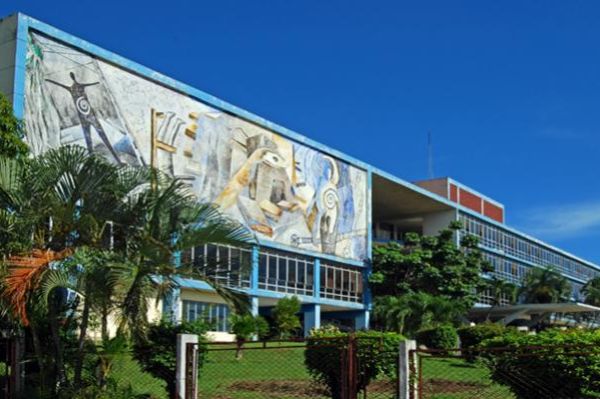
The patrimonial complex that makes up the University of Oriente in the eastern city of Santiago de Cuba was declared a National Monument on Thursday, in the presence of the highest political, governmental, and cultural authorities of the province.
Dr. Hebert Pérez Concepción, professor emeritus, and historian of the higher education center pointed out that the main value of the seven buildings and two outdoor spaces that make up the complex is that they constitute a work of generations, with traces, behaviors, and legacy.
Omar López, the curator of the city of Santiago de Cuba, read the Declaratory Resolution of the National Commission of Monuments, which states the buildings’ historical, artistic, environmental, and social richness.
The ceremony was preceded by awarding the title of Dr. Honoris Causa in Technical Sciences to its former rector, Enrique Marañon, who headed the university for two decades.
The University of Oriente was founded on October 10, 1947. Its genesis is found in the San Basilio el Magno seminary, created in 1722.
The university community played a leading role in the insurrectional struggle against Fulgencio Batista’s dictatorship; therefore, in November 1956, the center was closed due to the support of the University Student Federation of Oriente and its professors to the 26th of July Movement.
Leading figures of the national history and hundreds of intellectuals and professionals recognized nationally and internationally are among its graduates.
On January 3, 1959, the Library of the University of Oriente was the scenario of the constitution of the first Council of Ministers of the Revolutionary Government of Cuba.
 Escambray ENGLISH EDITION
Escambray ENGLISH EDITION





Escambray reserves the right to publish comments.